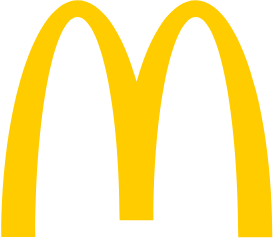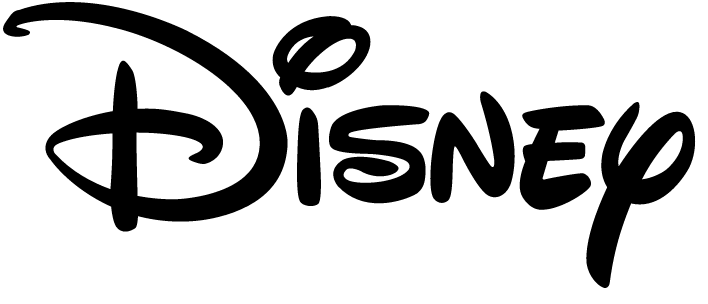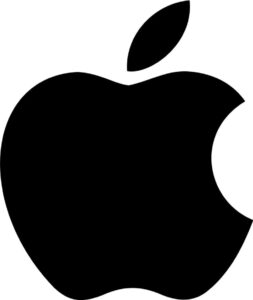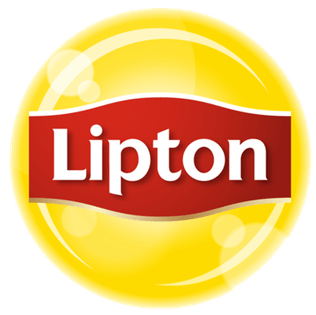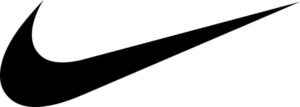A logo is a business entity, its front door, first impression, and a greeting to its customer. For some, good logos define a brand, make them stand out, and separate them from the other competitors in the industry. As such, brands work hard and meticulously on designing their logo to ensure that it represents their company, history, core values, mission, and goals. Their efforts on the famous logo you’ve countlessly seen around, reminding you of their business. Here, take a look at some of the famous brands and their logo, and the things we should learn from them.
Mcdonald’s
Who doesn’t recognize the golden arches? Its first design in 1962 was characterized by two arches connected by a diagonal slash, representing the restaurant’s architecture designed to be seen even from afar. Through time, the food chain’s made the logo straightforward but retained the bright red and yellow color combination that elicits happiness and appetite. Today, the company’s logo is so famous that people recognize it even without the restaurants’ full name, a fascinating example of a powerful logo.
Walt Disney
The leading animation brand among children has touched many lives of kids and kids’ at heart for many decades. Compared to other brands, the company had a different approach in their logo by using the creator’s signature. While it is only a stylized version, it symbolizes the pioneer of the American animation industry’s vision and how it was accomplished through the famous and wonderful series and flicks brought to us by Disney.
Apple
Apple’s initial logo in 1976 was very far from the logo they use today, showing Issac Newton reading a book beneath a tree while an apple hangs, seemingly like to drop at any moment. The logo was short-lived as Apple made it simply by replacing it with a literal, rainbow-colored apple, in time with the introduction of the company’s first color display unit.
It was then changed to a monochrome apple – the logo we see today. So, what’s with the change? Apple is renowned for producing sophisticated, sleek, clean machines. The current logo perfectly denotes those traits and embodies the company’s vision.
Coca-Cola
Coca-cola first launched its logo in 1886 in a black-and-white format, with the classic script handwriting available at that time. The logo was slightly altered through time and added with the renowned red and white color but kept its classic, cursive, fashionable style. Today, even if the logo is translated into different languages, people can still recognize the brand, proving its nostalgic and multinational appeal.
FedEx
FedEx’s original logo featured the company’s complete name, “Federal Express,” using the colors red and blue, which nationalism to the U.S. government. It was only 1994 when a new logo was devised to give it a fresh feel. Its name was cut short to FedEx, and a negative spaced arrow can be seen between the letters “E” and “X,” representing the brand’s commitment to speed and accuracy.
Lipton
If you’re in a supermarket looking for some tea, chances are you quickly notice Lipton’s iconic logo. Since its beginning, the tea company used the same color shades in its logo, yellow and red, representing the feeling its products provide to their consumers: love, warmth, and joy. Today, the simple yet elegant logo is one of the most iconic logos today. No surprise, as Lipton controls a significant portion of the global tea market and is valued for its long history and popularity.
Amazon
So, what did the creators employ in the world-famous Amazon logo – creativity, cleverness, and symbolism. You can see an arrow from the letter “A” connecting to the “Z,” showing that you can find and purchase nearly any product in the company from A to Z. Then, have you noticed the arrowhead? It resembles a dimple, and along with the arrow, it appears like a friendly smile, which is what Amazon wants their customers to get as they shop through their platform.
Chanel
Created in 1925, Chanel’s timeless logo featuring two interlocking Cs, representing Coco Chanel’s initials, and more importantly, perfectly suiting the brand’s dedication to fashionable, practical, and minimalist designs.
Nike
Created by Carolyn Davidson in 1971, who received $35 for the design, the Nike logo is now one of the most iconic logos worldwide. It is recognizable, needs no introduction, and can stand without the company’s name. Not known to many, Nike is actually the Greek goddess of victory and Pallas and River Styx’s daughter. The “swoosh” symbol represents the goddess’s movement, speed, and power, which the brand’s product is about. Now, you know that it’s not a checkmark, but you can see how creativity and simplicity can go a long way.


